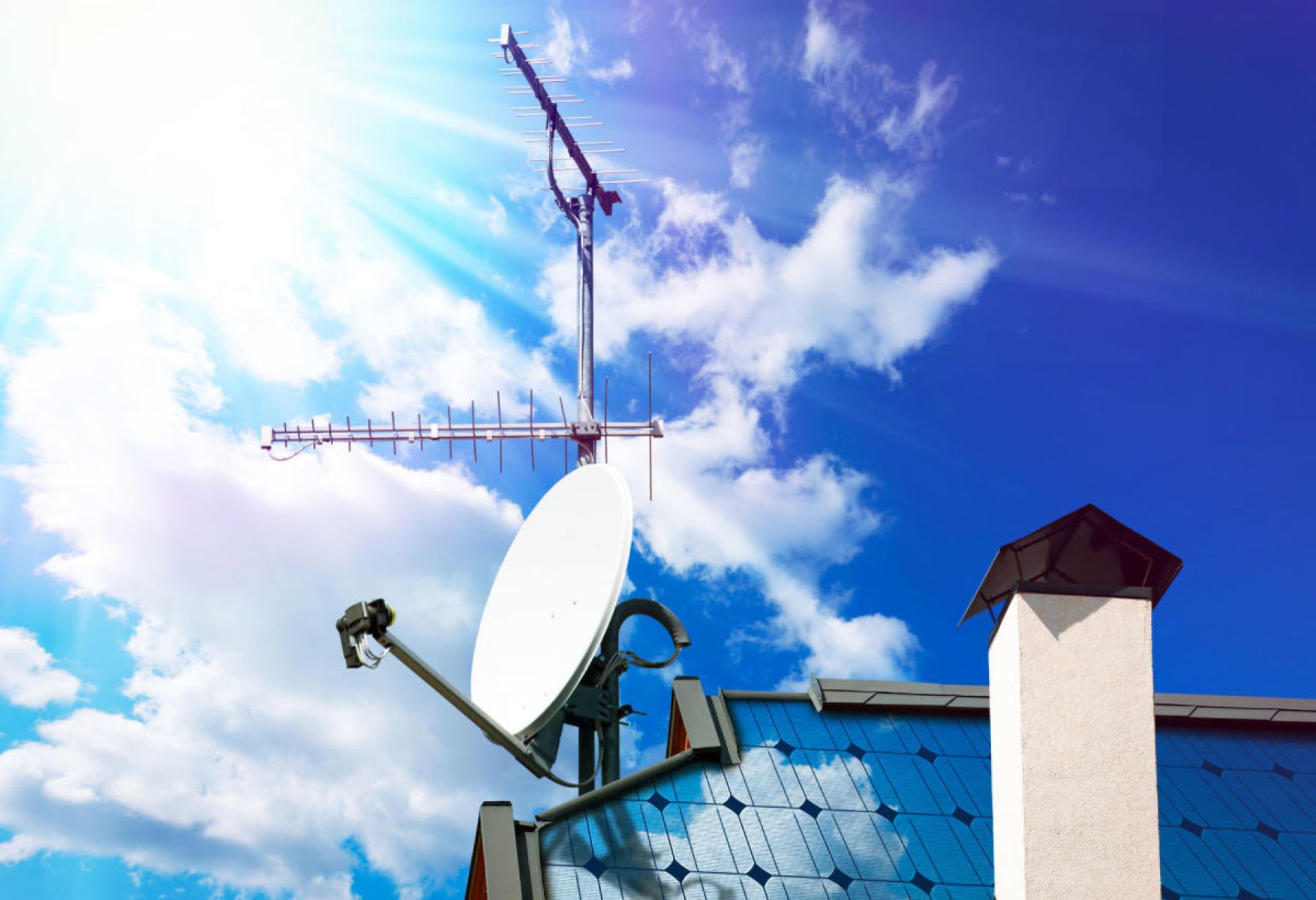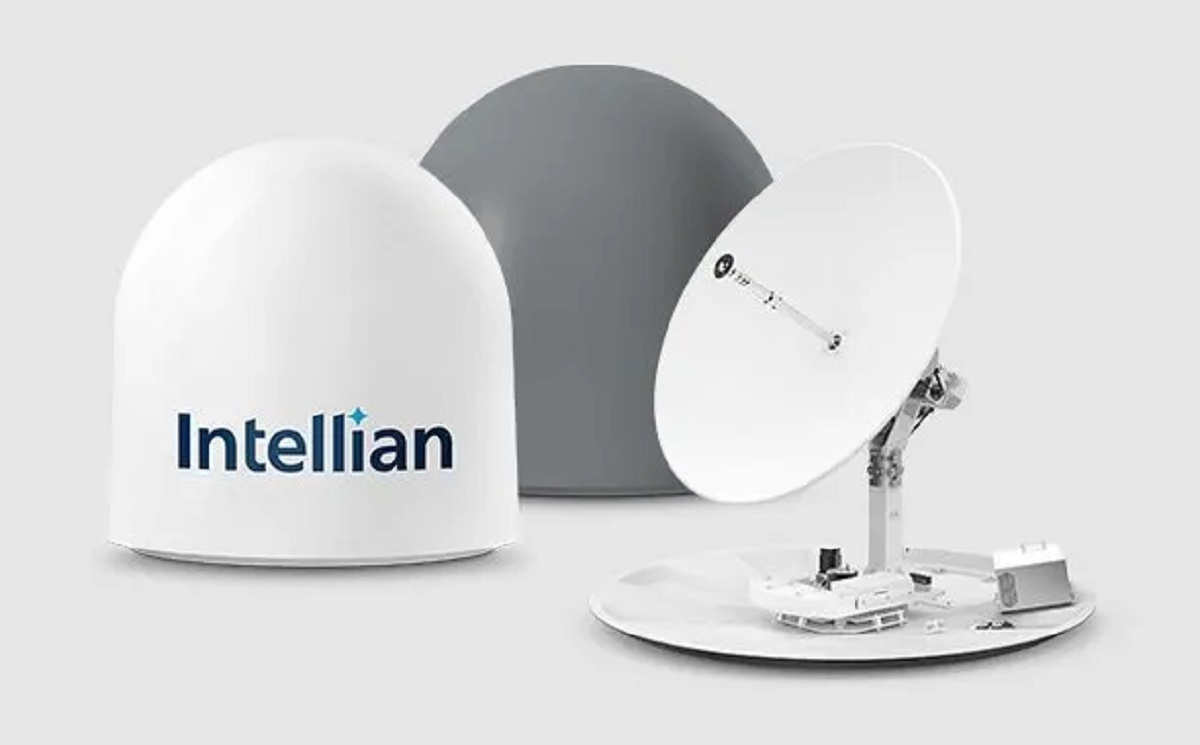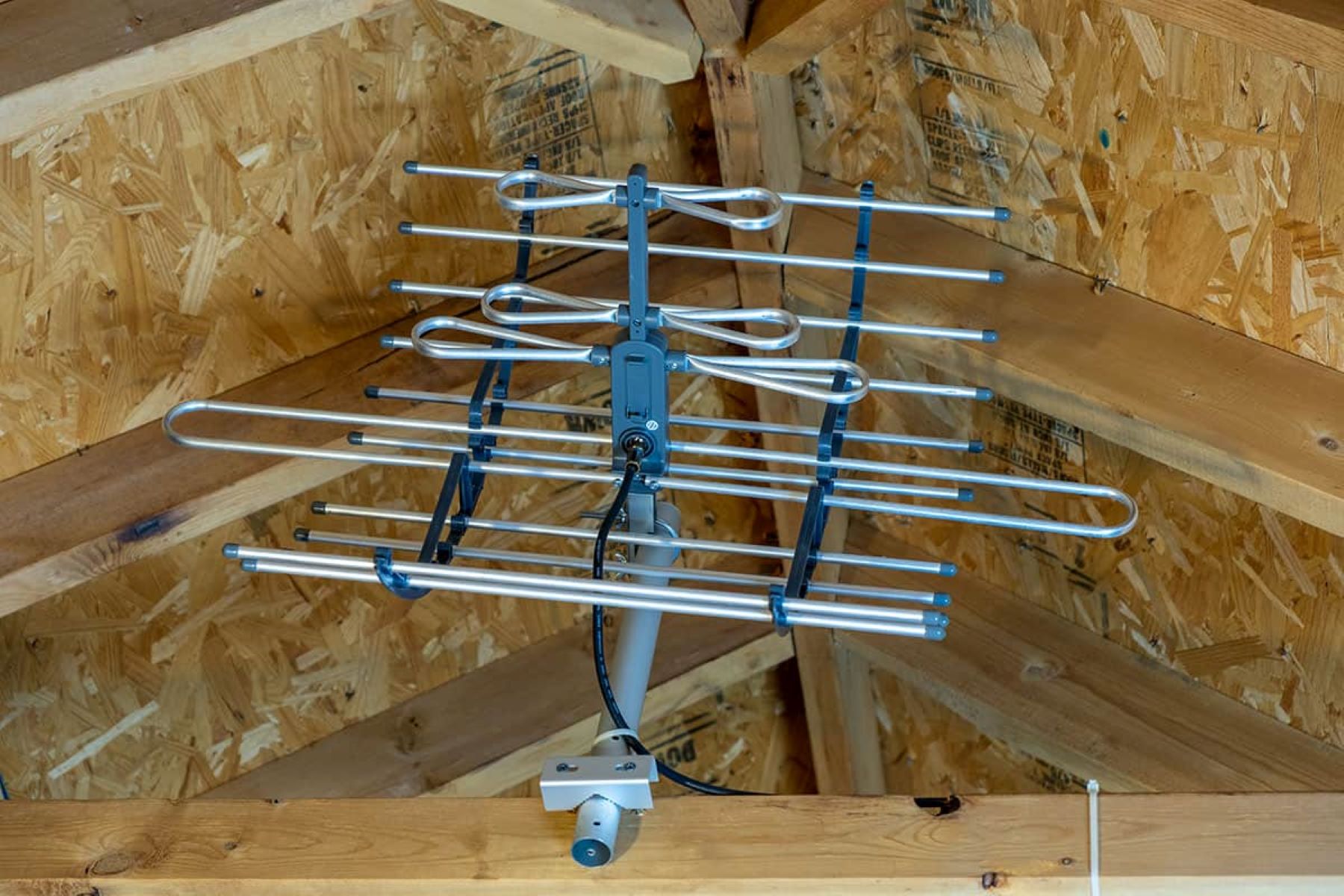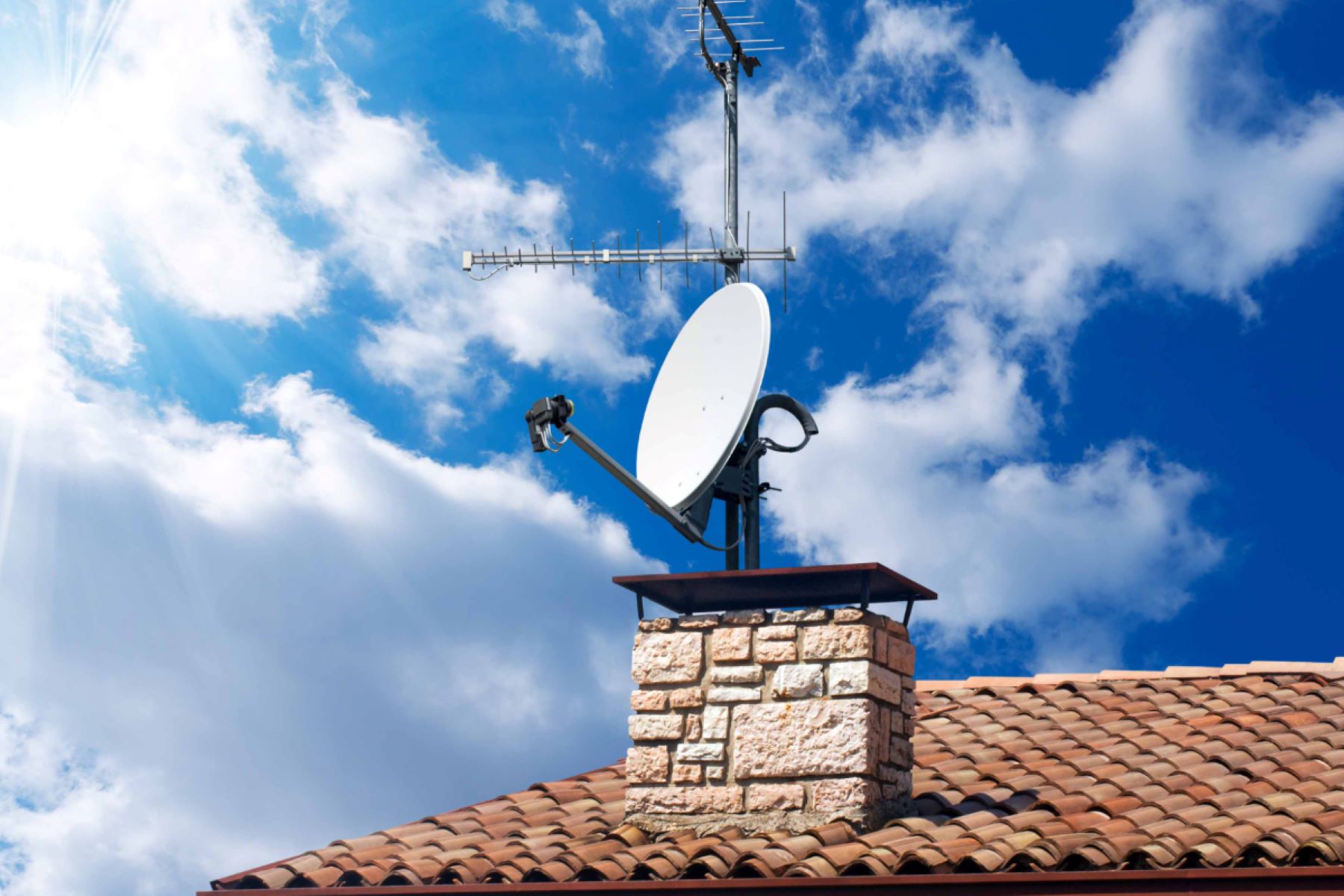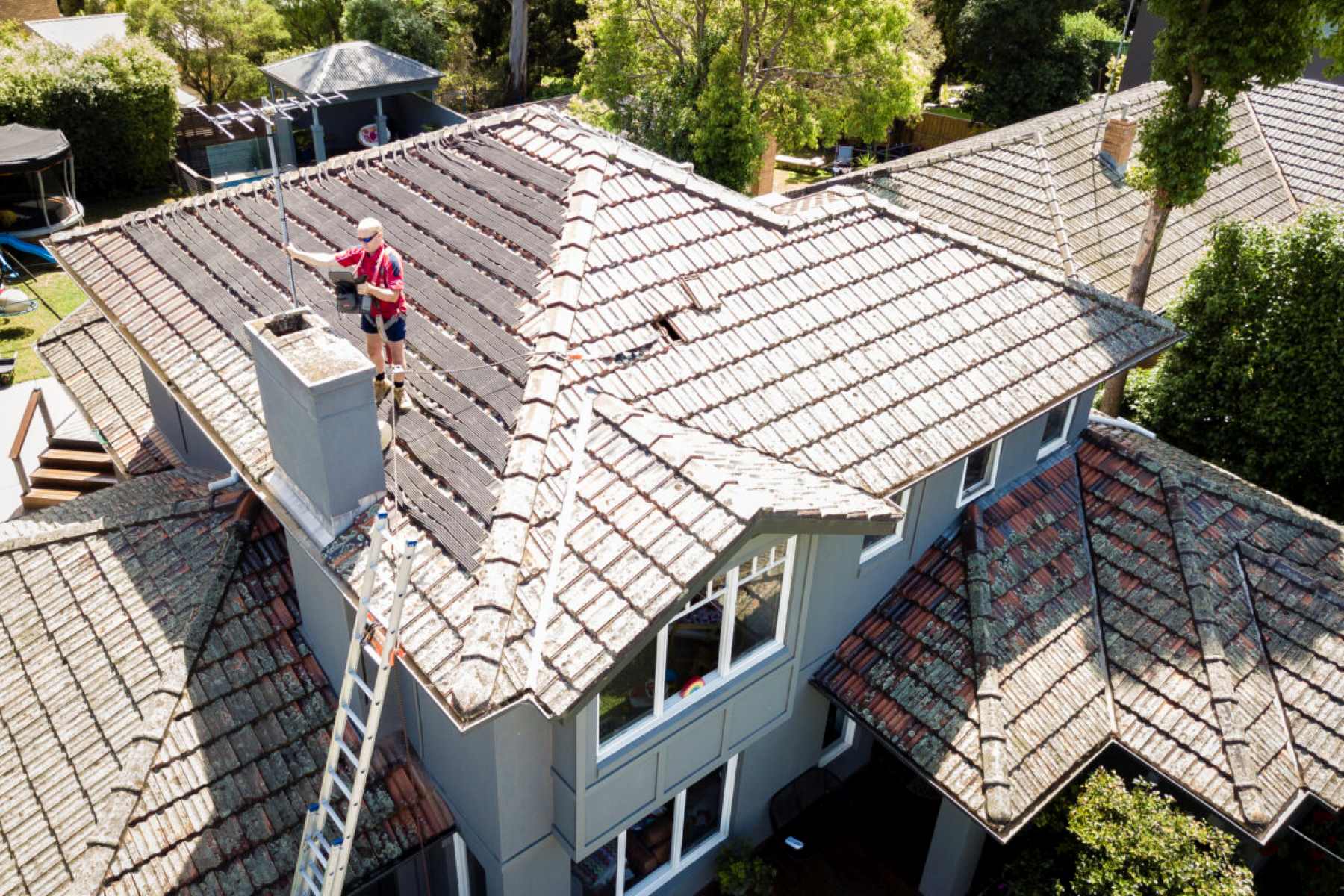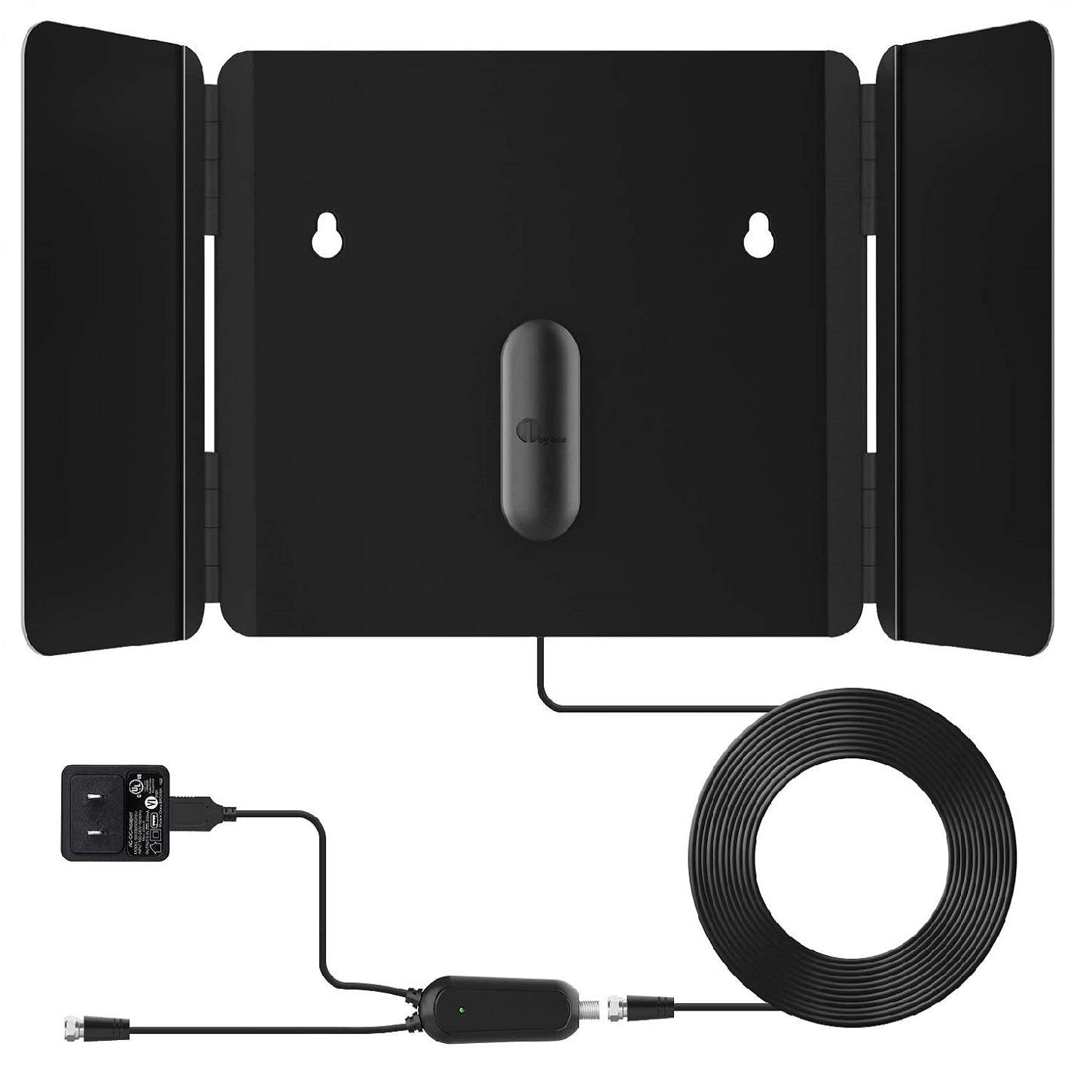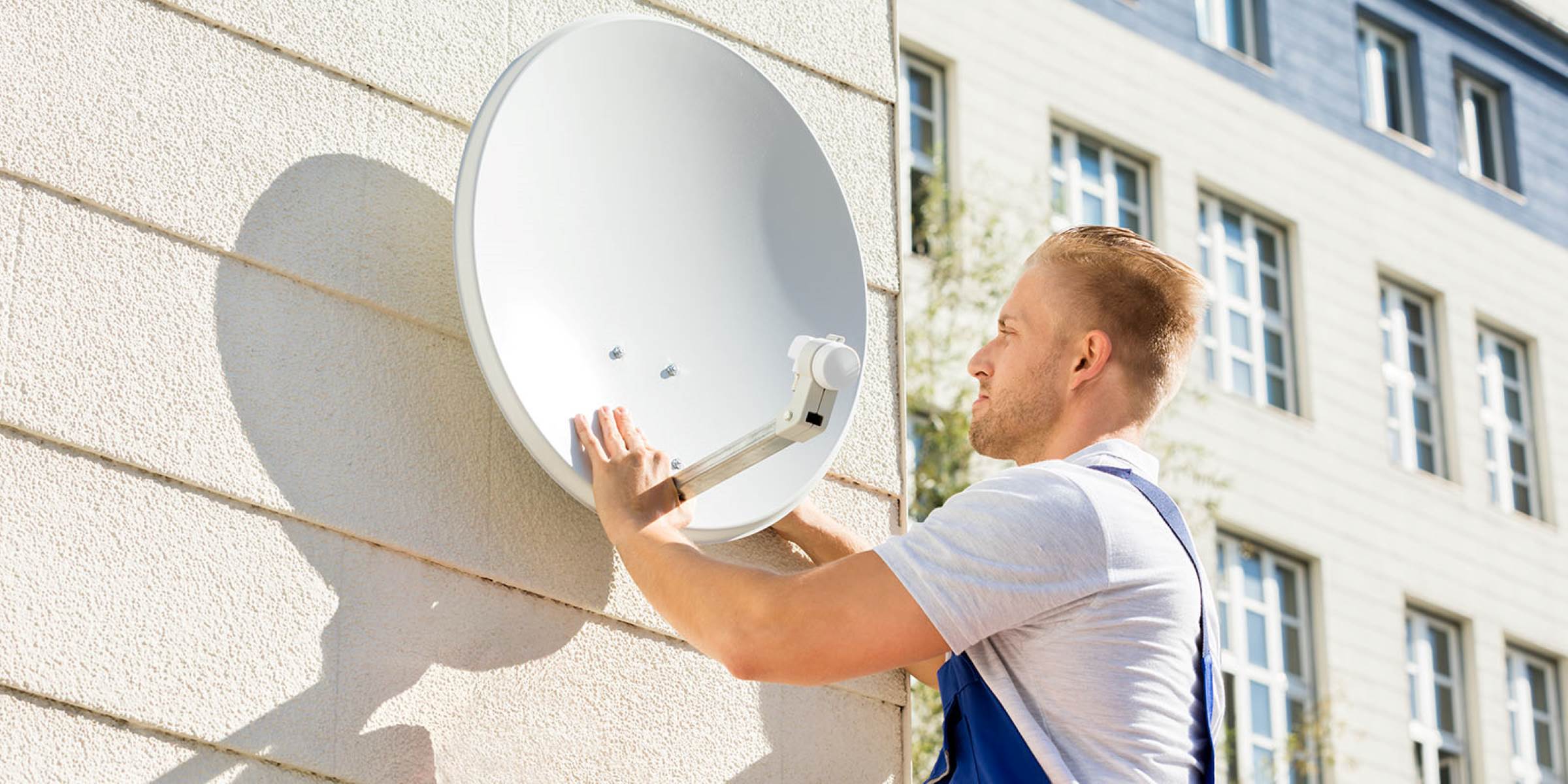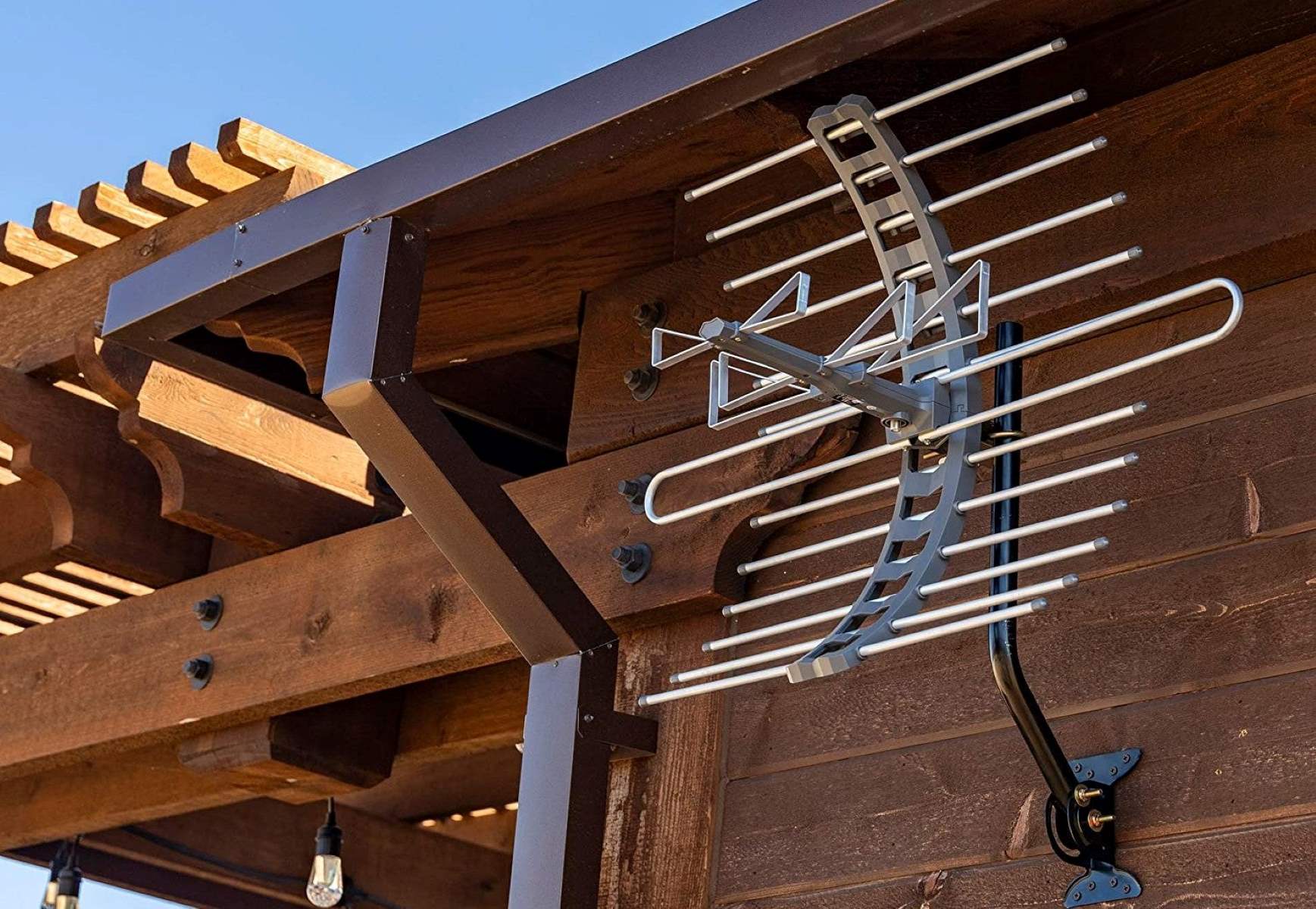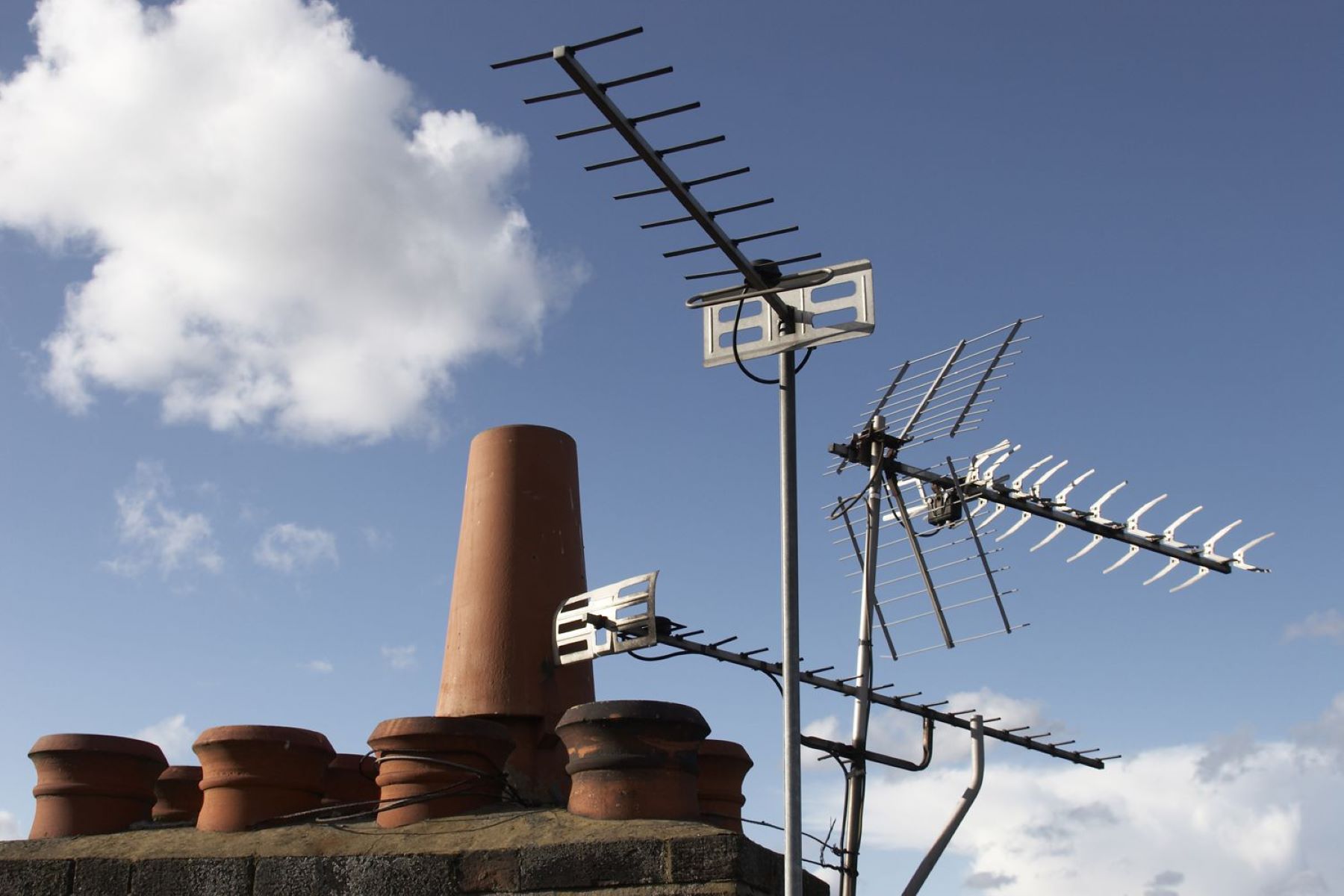Introduction
Welcome to the world of free over-the-air television! If you’re tired of paying for cable or satellite TV and you want to enjoy popular channels like NBC, ABC, CBS, and FOX, you’ll need a TV antenna. But here’s the million-dollar question: which way do you point your TV antenna to get the best reception?
Choosing the correct direction for your TV antenna is crucial for optimal signal strength and clarity. Without the proper orientation, you might end up with a fuzzy picture or missing out on your favorite shows. In this article, we’ll guide you through the process of pointing your TV antenna in the right direction, step-by-step.
To ensure you get the best TV reception possible, we’ll cover important factors that can affect TV antenna reception. We’ll also explain the concept of TV antenna signal direction and how understanding it can help in optimizing your reception. Additionally, we’ll show you how to determine the broadcast towers in your area and find the correct antenna orientation to receive the strongest signal.
Don’t worry if you’re new to this; we’ve got you covered! We’ll provide tips on using online tools and resources specifically designed to assist in TV antenna pointing. Moreover, we’ll discuss how to adjust and fine-tune your TV antenna to achieve the best possible results.
So, grab your TV antenna, tune in, and get ready to unleash the full potential of free over-the-air television!
Factors Affecting TV Antenna Reception
Several factors can impact the reception quality of your TV antenna. Understanding these factors will help you overcome potential obstacles and achieve the best signal strength possible.
1. Distance from Broadcast Towers: The distance between your location and the broadcast towers is a significant factor in TV antenna reception. The farther you are from the towers, the weaker the signal will be. If you live in a rural area or far from major cities, you might need to invest in a more powerful antenna or consider installing a signal booster.
2. Obstructions: Physical obstructions such as tall buildings, mountains, trees, and even large structures inside your home can obstruct the TV signal. The more obstacles between your antenna and the broadcast towers, the weaker the signal will be. To improve reception, try to install your TV antenna in a location with a clear line of sight to the towers and away from any obstructions.
3. Surrounding Interference: Nearby electronic devices, power lines, and even certain weather conditions can introduce interference and affect TV antenna reception. This interference can cause signal degradation and lead to poor picture quality. To minimize this, keep your antenna away from electronic devices and try to position it in a spot with minimal interference.
4. Antenna Quality: The quality and type of antenna you choose can also impact reception. Different antennas have different ranges and capabilities. It’s important to invest in a high-quality antenna that is designed for your specific needs and the signal conditions in your area.
5. Signal Overload: In some cases, too much signal can be as bad as too little signal. If you live near multiple broadcast towers, the strong signals from these towers can interfere with each other, causing reception issues. In such cases, you may need to use an antenna with a built-in signal amplifier or install filters to reduce unwanted signals.
By considering these factors and taking necessary steps to mitigate any potential issues, you can significantly improve the reception quality of your TV antenna. So, let’s move on to understanding TV antenna signal direction and how it plays a crucial role in optimizing your reception.
Understanding TV Antenna Signal Direction
TV antenna signal direction refers to the orientation in which your antenna should be pointed to receive the strongest signal from the broadcast towers. Each tower broadcasts signals in a specific direction, aiming to reach a particular geographic area. By aligning your antenna with the signal direction, you can maximize signal strength and improve reception quality.
To understand signal direction, it’s important to know that TV antennas receive signals in two different ways: horizontally polarized and vertically polarized. Horizontal polarization is commonly used for UHF signals, while vertical polarization is used for VHF signals. Some antennas are designed to receive both types of signals.
Here are a few key concepts to help you understand TV antenna signal direction:
1. Broadcast Tower Locations: The first step is to determine the locations of the broadcast towers in your area. These towers transmit TV signals to your home. You can find this information online by using websites or apps that provide tower location maps specifically for TV antennas.
2. Antenna Orientation: Once you know the direction of the broadcast towers, you need to align your antenna accordingly. If all the towers are in the same general direction, pointing the antenna directly toward them will yield optimal results. However, in some cases, the towers might be spread out in different directions. In such situations, you may need to use a rotatable or multi-directional antenna to capture signals from all directions.
3. Signal Reflectors: Some TV antennas come with signal reflectors or directors to enhance signal reception. Reflectors are positioned behind the antenna, redirecting and focusing the signal toward the antenna elements. Directors, on the other hand, are positioned in front of the antenna to improve directivity and boost signal strength. These elements can be adjusted and optimized to fine-tune your TV antenna’s performance.
By understanding the signal direction and aligning your antenna accordingly, you can ensure that it receives the strongest possible signal from the broadcast towers. This will greatly enhance your TV viewing experience, providing clear and reliable reception. Now let’s move on to the next section, where we’ll discuss how to determine the broadcast towers in your area.
Determining the Broadcast Towers in Your Area
Before you can accurately point your TV antenna in the right direction, you need to determine the locations of the broadcast towers in your area. This information will help you understand the signal direction and align your antenna accordingly. Here are a few methods you can use to determine the broadcast towers:
1. Online Tools and Websites: There are several online tools and websites specifically designed to help you find the broadcast towers in your area. These tools use your location data or address to generate a map displaying the tower locations, signal strength, and distance. Some popular websites include AntennaWeb.org, FCC.gov, and TV Fool. By entering your location, you can easily identify the towers and their signal direction.
2. Mobile Apps: If you prefer using your smartphone, there are mobile apps available that provide information about local broadcast towers. Apps like “TV Towers Locator” and “Tablo TV Signal Locator” use your device’s GPS to identify nearby towers and offer information about signal strength and direction.
3. Local Antenna Installers: Another option is to consult with a local antenna installer or technician. These professionals have extensive knowledge and experience in installing TV antennas and can provide accurate information about tower locations in your area.
Once you have identified the broadcast towers in your area, you can determine the signal direction and align your antenna accordingly. This step is crucial in maximizing signal strength and ensuring optimal reception quality. Keep in mind that the signal direction may vary based on the type of signals being broadcast (UHF or VHF) and the specific towers in your location.
By utilizing online tools, mobile apps, or consulting with professionals, you can easily determine the broadcast towers in your area and gain valuable insights into the signal direction. This knowledge sets the foundation for accurately pointing your TV antenna and enhancing your viewing experience. Now, let’s continue to the next section, where we’ll discuss the correct antenna orientation based on the detected signal direction.
Finding the Correct Antenna Orientation
Now that you know the locations and signal direction of the broadcast towers in your area, it’s time to find the correct orientation for your TV antenna. The antenna orientation refers to the angle and positioning of your antenna to maximize signal reception. Here’s how you can determine the correct antenna orientation:
1. Aligning with Signal Direction: Use a compass or the information obtained from online tools to identify the general direction of the broadcast towers. Pointing your antenna in this direction will help capture the strongest signal. Remember to consider both horizontal and vertical polarization, depending on the type of signals being broadcast in your area.
2. Fine-Tuning the Angle: Once your antenna is pointed in the general direction, you may need to fine-tune its angle. Start by aligning it horizontally, parallel to the ground. Gradually adjust the angle to achieve the best possible signal strength. You can use a signal meter or your TV’s signal strength indicator to monitor the changes as you adjust the antenna’s position.
3. Testing Multiple Orientations: In some cases, the ideal antenna orientation may not align perfectly with the signal direction or may vary across different channels. To optimize your reception, it’s a good idea to test multiple orientations. Rotate the antenna slightly and rescan for channels to see if there’s any improvement in signal quality. This trial-and-error method can help you find the optimal orientation for your specific location.
4. Consider Height and Location: The height and location of your antenna can also impact reception. Placing the antenna at a higher elevation, such as on a rooftop or in an attic, can help overcome obstructions and improve signal reception. Similarly, positioning the antenna in a location with minimal interference, away from other electronic devices, can lead to better reception.
Remember, finding the correct antenna orientation may require some patience and experimentation. Allow yourself some time to test different orientations and fine-tune your antenna’s position for optimal reception. With the right orientation, you’ll be able to enjoy clear and reliable TV signals from the broadcast towers in your area.
Now that we have covered the process of finding the correct antenna orientation, let’s explore some online tools and resources that can assist you further in pointing your TV antenna.
Using Online Tools and Resources for TV Antenna Pointing
Thanks to modern technology, there are several online tools and resources available that can assist you in precisely pointing your TV antenna. These tools provide valuable information, such as tower locations, signal strength, and antenna orientation guidance. Here’s how you can utilize these tools:
1. Antenna Pointing Websites: Websites like AntennaWeb.org, FCC.gov, and TV Fool offer interactive maps and search functions to help you identify the broadcast towers in your area. Simply enter your location information, and these websites will generate a detailed report displaying tower locations, signal strength, and recommended antenna orientations. You can use this information as a guide to align your antenna accurately.
2. Signal Analysis Apps: Mobile apps like “My Antenna” and “Antenna Mate” provide a comprehensive analysis of the signal strength from nearby towers. These apps utilize your device’s GPS to determine your location and display a list of available channels, along with their signal strength and suggested antenna orientation. Some apps even include augmented reality features, allowing you to visualize the tower locations and antenna orientation directly on your smartphone’s camera view.
3. Online Antenna Pointing Calculators: Online antenna pointing calculators, such as those available on CutTheCord.com or Denny’s Antenna Service, provide a more advanced approach to antenna pointing. These calculators consider your location, terrain, and desired channels to recommend the optimal antenna type, height, and orientation. They can be especially helpful if you’re looking for detailed guidance based on specific factors that might impact your reception.
4. Online Forums and Communities: Engaging with online forums and communities dedicated to TV antennas and cord-cutting can provide you with firsthand experiences and tips from fellow enthusiasts. Platforms like Reddit’s r/cordcutters and AVSForum have active user communities, where you can ask questions, seek advice, and gain insights into antenna pointing techniques that have worked for others in similar locations.
Utilizing these online tools and resources can significantly simplify the process of pointing your TV antenna. They provide accurate and up-to-date information about tower locations, signal strength, and antenna orientations. With the assistance of these tools, you can ensure that your antenna is perfectly aligned to receive the strongest signal and enjoy high-quality TV reception.
Now that you’re equipped with the knowledge of how to utilize online tools, let’s move on to the next section, where we’ll discuss how to adjust and fine-tune your TV antenna for optimal reception.
Adjusting and Fine-Tuning Your TV Antenna
Once you have pointed your TV antenna in the correct direction, there might still be some adjustments and fine-tuning required to optimize your reception. Here are some tips to help you adjust and fine-tune your TV antenna:
1. Rescan for Channels: After aligning your antenna, perform a channel scan on your TV or digital converter box to detect all available channels. This will ensure that you are receiving the maximum number of channels and that they are properly tuned.
2. Rotate the Antenna: If you notice that some channels have weak or no signal, try rotating the antenna slightly in different directions. Small adjustments can sometimes make a significant difference in reception quality. Remember to rescan for channels after each rotation to see if the signal strength improves.
3. Experiment with Elevation: If you are still experiencing issues with signal quality, try adjusting the height or elevation of your antenna. Elevating it higher, such as on a rooftop or in an attic, can help overcome obstructions and improve reception. Keep in mind that different locations might require different heights for optimal reception, so it’s worth experimenting with different elevations.
4. Fine-Tune the Angle: Fine-tuning the angle of your antenna can also impact reception. Gradually adjust the angle of the antenna, both vertically and horizontally, to find the sweet spot that provides the strongest signal strength. Use a signal meter or your TV’s signal strength indicator to assist you in finding the optimal angle.
5. Consider Signal Boosters: In areas with particularly weak signals or significant obstructions, you might benefit from using a signal booster or amplifier. These devices can amplify the signal and improve reception quality. However, it’s important to note that signal boosters should only be used when necessary, as they can also amplify unwanted noise and interference.
6. Consult with a Professional: If you’re still having trouble with reception, it may be beneficial to consult with a professional antenna installer or technician. They have the expertise and experience to help diagnose reception issues, fine-tune your antenna, and recommend additional equipment if needed.
Remember, adjusting and fine-tuning your TV antenna might require some patience and experimentation. It’s normal to make small adjustments and reposition your antenna multiple times to achieve optimal reception. By following these tips and taking the time to fine-tune your antenna, you can enjoy crystal-clear TV signals and a reliable viewing experience.
Now that we’ve explored the process of adjusting and fine-tuning your TV antenna, let’s move on to the next section, where we’ll answer some frequently asked questions about TV antenna pointing.
Frequently Asked Questions about TV Antenna Pointing
1. How do I know which direction to point my TV antenna?
To determine the direction to point your TV antenna, you can use online tools and resources that provide information about broadcast tower locations in your area. These tools will help you identify the general direction in which your antenna should be pointed to receive the strongest signal.
2. Can I use a compass to point my TV antenna?
Yes, a compass can be a handy tool to help you align your TV antenna. By knowing the general direction of the broadcast towers, you can use a compass to point your antenna in the correct orientation. Just ensure that you take into consideration both horizontal and vertical polarization based on the type of signals being broadcast in your area.
3. Do I need to adjust my TV antenna if I move to a new location?
Yes, if you move to a new location, you will need to readjust your TV antenna. The broadcast tower locations and signal directions can differ from one area to another, so you’ll need to use online tools or consult professionals to determine the new signal direction for your antenna.
4. How high should I mount my TV antenna?
The optimal height for mounting your TV antenna can vary depending on your location and terrain. In general, mounting it as high as possible, such as on a rooftop or in an attic, can help in minimizing obstructions and improving reception. Experiment with different mounting heights to find the one that provides the best signal strength.
5. Can I use multiple antennas to improve my reception?
Using multiple antennas, such as a combination of UHF and VHF antennas, can be a solution in areas with signals coming from different directions. You can use a device called a combiner to merge the signals from multiple antennas into one cable that goes to your TV. This setup can help you capture signals from different directions and maximize reception.
6. What should I do if my TV antenna is still not picking up some channels?
If your TV antenna is not picking up some channels, try repositioning and fine-tuning your antenna. Rotate it slightly, adjust the angle, and experiment with different elevations. You can also consider using a signal amplifier or consulting with a professional to help diagnose and resolve any reception issues.
By addressing these common questions, we hope to have provided you with a better understanding of TV antenna pointing. If you still have specific concerns or inquiries, feel free to seek assistance from professionals in the field or join online communities for cord-cutters to exchange experiences and gain valuable insights.
Now, let’s conclude this article by summarizing the essential points discussed and emphasizing the importance of accurate TV antenna pointing for optimal reception.
Conclusion
Properly pointing your TV antenna is crucial to achieving optimal reception and enjoying a clear and reliable TV viewing experience. By understanding the factors that affect TV antenna reception, such as distance from broadcast towers and obstructions, you can take necessary steps to overcome or minimize these challenges.
Understanding TV antenna signal direction is key in aligning your antenna correctly. By determining the broadcast tower locations in your area and using online tools and resources, you can identify the signal direction and align your antenna accordingly. Fine-tuning the antenna angle and experimenting with elevation can further improve reception.
Online tools and resources, such as antenna pointing websites, signal analysis apps, and online forums, can provide valuable information and assistance in accurately pointing your TV antenna. Utilizing these tools can simplify the process and ensure that your antenna is aligned to receive the strongest possible signal.
Remember, adjusting and fine-tuning your TV antenna may take some time and patience. It’s normal to make small adjustments and test different orientations to achieve optimal reception. Additionally, consulting with professionals or seeking advice from online communities can provide valuable insights and support in troubleshooting any reception issues.
With the correct antenna orientation and fine-tuned positioning, you can enjoy free over-the-air TV channels with crystal-clear picture quality, saving you from costly cable or satellite subscriptions. So, take the time to point your TV antenna accurately and unlock the full potential of free TV broadcasting!







